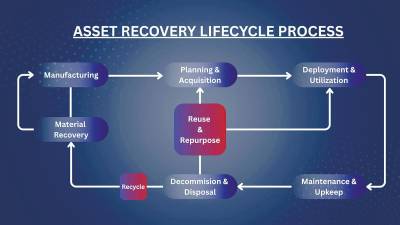AS environmental and social governance (ESG) becomes a key consideration for businesses in Malaysia and worldwide, many companies are re-examining how their day-to-day operations align with long-term sustainability goals.
One area often overlooked in this process is industrial asset disposal, which is the management of equipment, machinery, and other capital goods once they reach the end of their productive life. Today, the way companies dispose of their industrial assets is becoming a new frontier in ESG performance, and those leading the shift are discovering unexpected economic and environmental returns.
Traditionally seen as a backend administrative function, asset disposal is now emerging as a vital piece of the ESG puzzle. As Malaysia progresses toward its national goal of carbon neutrality by 2050, supported by frameworks such as the National Energy Transition Roadmap (NETR) and Green Technology Master Plan, businesses are expected to contribute meaningfully, not just through emission reduction, but also through resource efficiency, waste minimisation, and circular economy practices.
Reframing Disposal as a Strategic ESG Lever
The conventional approach to asset disposal — where decommissioned or surplus equipment is left to deteriorate in storage or sent to landfills — is rapidly losing ground. Businesses today are rethinking the end-of-life phase of their equipment, recognising it as a critical opportunity to advance ESG commitments, recover economic value, and reduce environmental impact.
This mindset shift is closely aligned with the global momentum behind circular economy principles, now gaining traction across Malaysia’s key industrial sectors such as oil & gas, construction, and manufacturing. Locally, e-waste recovery initiatives have demonstrated how cross-sector collaboration can lead to impactful results. For example, public-private recycling campaigns have successfully collected tens of thousands of electronic devices and diverted tonnes of hazardous materials from landfills through accessible collection models, including door-to-door pickup and postal return systems.
On a larger scale, integrated waste management facilities in the country are proving how infrastructure-led solutions can address complex disposal needs while advancing national sustainability goals. These developments reflect a broader awareness that responsible decommissioning isn’t just an operational necessity — it’s a strategic lever for ESG-driven transformation.
Measuring Impact
Transparency and traceability have become non-negotiables in ESG. Bursa Malaysia’s 2024 Sustainability Reporting Guide strongly encourages outcome-based reporting, where companies must back up their ESG narratives with quantifiable results, including emissions reductions, waste minimisation, and measurable resource efficiency (pg. 43).
For example, BidMyAsset, a Malaysian industrial asset disposal platform, has begun embedding carbon savings metrics, asset lifecycle tracking, and audit-compliant disposal reports into its digital offering. This enables businesses to not only track disposal outcomes but also to align with Bursa’s sustainability disclosure requirements and future-proof their operations.
Recent community-level efforts further reflect this shift: Ipoh City Council collected 25 tonnes of e-waste in just five months (Jan–May 2024), while Sarikei District saw a 52% increase in recycling rates driven by its 3R and e-waste campaigns. The movement is growing from boardrooms to municipal councils.
Empowering SMEs and Local Industry
Circular practices in asset disposal are not just a big-business concern. SMEs, which account for over 97% of business establishments in Malaysia, stand to gain significant economic value from access to pre-owned industrial equipment. These access allow smaller firms to upgrade or expand without the heavy capital outlay typically associated with new machinery. By facilitating resale, reallocation, and responsible decommissioning, platforms like BidMyAsset are helping to democratise access to capital assets while reducing unnecessary waste.
Technology as an Enabler
From blockchain-enabled traceability to integrated reporting dashboards, digital technology is revolutionising how businesses handle end-of-life assets. Online auction systems, real-time asset tracking, and automated documentation are making the disposal process more accountable and efficient.
These advancements allow businesses to align operations with ESG benchmarks while minimising the cost and effort typically associated with compliance. It also opens up a data trail that investors, regulators, and internal stakeholders can trust.
Conclusion
Sustainability in industrial operations no longer starts and ends with energy savings or emissions targets. It encompasses the full lifecycle of assets, from acquisition to responsible retirement. As ESG expectations rise and circular economy principles take root, businesses in Malaysia must treat asset disposal as a strategic priority.
With platforms like BidMyAsset and clear regulatory roadmaps from Bursa Malaysia, the tools and guidance are now in place. The next step lies with companies — to act, to adapt, and to lead responsibly. Responsible asset disposal is no longer a compliance task; it’s a competitive advantage.
This article is contributed by BidMyAsset co-founder Jeevan Muniandy.
